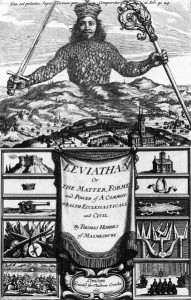My understanding of Tufte in his short article on confections is perhaps summed in the very serious but perfectly brief statement, “what a collage does for art, confections do for arranging information.” Through out Tufte’s rather descriptive excerpt he presents various examples of how confections are used. First, for those who have not read this piece of Tufte’s, a confection is—from my interpretation—a collection of images, information, scenes, or other visual media meant for structuring information in a re-memorable and meaningful sequence usually comprised of two ‘strategies’ such that they are compartments or imagined scenes—although he dutifully notes that most confections are in fact a multiplicity of these qualities.
Perhaps the greatest asset of Tufte’s discussion is his brief reference to the facilitation of memory that confections create. He notes that memory is critically enhanced when one connects several pieces of obscure, odd, obscene, obtrusive, or otherwise outlandish objects into a stream of consciousness—or perhaps using word play to allow the reader to remember particularly pungent pieces of pedagogical information. I, of course, have abused alliteration here to get the reader to realize my ploy, but did it make you remember it? Perhaps, perhaps not, but this is exactly what a confection is meant to do according to Tufte, abuse the visual sense in order to allow the interpreter rapture and seal away the information into their minds for eternity.
It is no surprise that Tufte offers several unique and some ubiquitous examples of confections, such as the often examined title page of Hobbe’s Leviathan–which is highly compartmentalized as previously mentioned in which Tufte goes on great lengths describing the 10 various sectors of important and meaningful information designed by Hobbes to grasp the readers overwhelming attention and to en-grain his ideas into the minds of those readers.
But what I wonder is whether the marketing world has sort-of left this region of memorization lay still. Although I must note that Tufte does mention the usage in propaganda—particularly of a Russian nature—in this modern day and time I fail to see compartmentalized structures of confections used widely—or perhaps is this also a result of subliminal advertising. Tufte descries Babar’s dream as being a confection, one which I myself would think to be rather laughable to humor, but his points are concrete, in the image—which you might find by the course readings on pages 8 and 9 of the excerpt—there are two compartments, and further still two imaginary circumstances. One of Babar and his clan of holy angels—the elephants for those of you not affiliated with the lovable childrens’ show, I watch it regularly–chasing the other sector of what would appear to be an odd assortment of ne’er do wells. Now the pages is in French, and a quick glance and critical Latin roots would allow you to reason that the image discusses a triumph of good over evil and more complexly a dichotomy of the good virtues verses the bad–provided of course you can read French.
My purpose in this discussion is to say, that we see imaginary situations in everyday life, which are perhaps confections. These may be compartmentalized, for example, think back to the last time you were in a large city with mega-buses which have pictures of a man on-top of a women in erotic pleasure, your mind is now fixated on that image, compartmentalized and seized—you remember it. Now pan over to the left, or right depending on which side of the bus you saw it on–and you will probably think of one or two things–either condoms or a variant of lubrication. My intent is not to be vulgar, but would you stop to think, “ what a wonderful composition, a perfect confection”. It has made you remember, and that’s what the marketers want–for you to remember. And although laying on top of such a beautiful model—or below one such as might be the case–might be our dreams, it is often not a reality, and with the object of interest separated, we are forced to place 1 and 2 together, forming a cognitive linkage, forever engrained in our mind—which is how I venture that most all of you will remember and be able to recall these instances. Perhaps Tufte’s discussion of Babar isn’t laughable after all.
